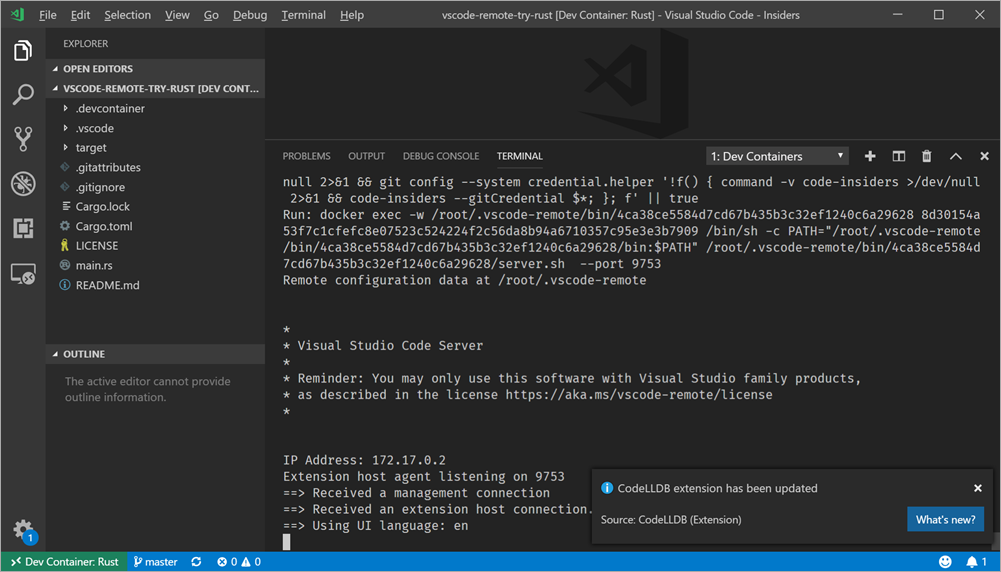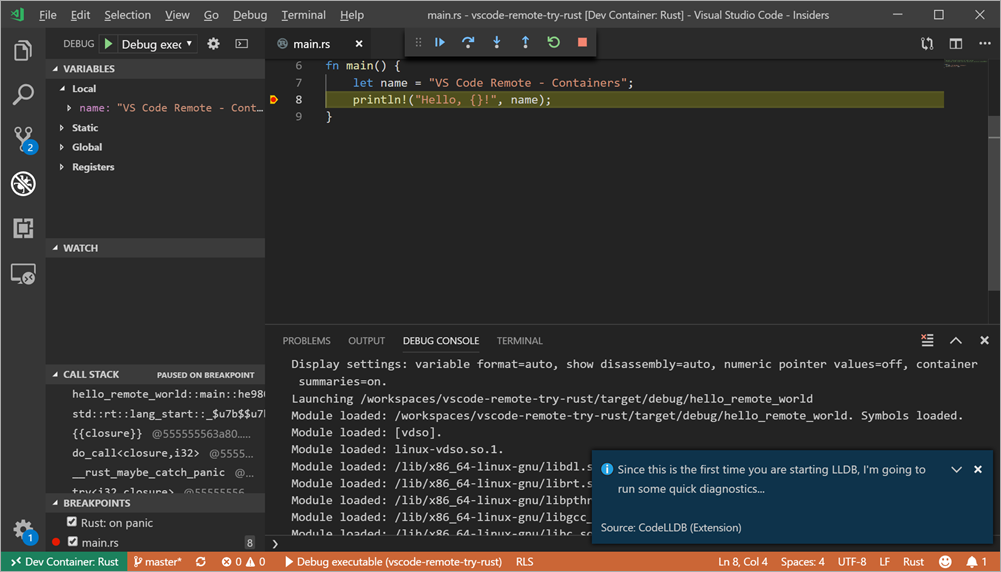![Man working at a desktop computer in a bright office.]()
IoT is ushering in an exciting—and sometimes exasperating—time of innovation. Adoption isn’t easy, so it’s important to hold a vision of the promise of Industry 4.0 in mind as you get ready for this next wave of business.
IoT can serve as an onramp to continual transformation, providing companies with the ability to capitalize more fully on automation, AI, and machine learning. As companies harness the power of IoT, cloud services, robotics, and other emerging technologies, they’ll discover new ways of working, creating, and living. They’ll test and learn more swiftly, and scale results in the most promising areas. And this innovation will find form in smart buildings, more efficient factories, connected cities, fully autonomous vehicles, a healthier environment, and better lives.
Between now and that digital world, there are years of trial and error and dozens of applications ahead. But companies across the spectrum are embedding IoT to attain data and analytics mastery, optimize processes, create new services, and rethink products right now. Their leaders are positioning themselves and their companies to take advantage of the promise of digitization across industries.
This post is the fourth in a four-part series designed to help companies maximize their ROI on IoT. In the first post, we discussed how IoT can transform businesses. In the second, we shared insights on how to create a successful strategy that yields desired ROI. In the third post, we discussed how companies can fill capability gaps. Now let’s offer some fresh thinking on what innovation could look like for your company.
IoT innovation is not one size fits all. What it means for a process manufacturing firm is necessarily different than what it will mean for a healthcare company. To help you understand how you might apply IoT to your business—and learn from companies that have gone before you—here are four different innovation plays.
Push service optimization to new levels
With almost all companies competing on the customer experience, it makes sense to optimize service levels to trim cost, error, and delay from customer-facing processes. Better service can be a key differentiator in the marketplace. And when it’s paired with continual optimization enabled by IoT, your customers start seeing the benefit in their businesses.
Jabil is one of the world’s largest and most innovative providers of manufacturing, design engineering, and supply-chain-management technologies. Jabil was quick to recognize that keeping and increasing its competitive edge required the company to accelerate production cycles and personalize products. Its customers might order a product only once, meaning that they couldn’t afford the time delays and waste of traditional inspection processes. “We have many products that customers expect to [have] in their shops within a week,” says Matt Behringer, chief information officer for enterprise operations and quality systems at Jabil. “And that is including transit.”
Jabil used an IoT approach based on the Microsoft Azure Cortana Intelligence Suite to connect systems, gain predictive intelligence, and increase its flexibility and scalability. In a pilot project that connected an electronics manufacturing production line to the cloud, Jabil was able to anticipate and avoid more than half of circuit board failures at the second step in the process, and the remaining 45 percent at the sixth step. By using AI and machine learning, Jabil can correct board errors even earlier in the process, reducing scrapped materials, product failures, and warranty issues. Now, the IoT platform monitors all individual production lines and collects data from every Jabil factory and product worldwide. Jabil is pushing optimization further by using deep neural networks to refine its automated optical inspection process, increasing speed and accuracy to new levels.
“One of the things we’re able to do with predictive analytics in Azure is reduce waste, whether it’s from a process or design issue, or as a result of maintaining enough excess inventory to ensure we have enough for shipment. We’re confident we can produce a good-quality product all the way through the line,” says Behringer.
Leverage data from a digital ecosystem
As companies build IoT-enabled systems of intelligence, they’re creating ecosystems where partners work together seamlessly in a fluid and ever-changing digital supply chain. Participants gain access to a centralized view of real-time data they can use to fine-tune processes, and analytics to enable predictive decision-making. In addition, automation can help customers reduce sources of waste such as unnecessary resource use.
PCL Construction comprises a group of independent construction companies that perform work in the United States, the Caribbean, and Australia. Recognizing that smart buildings are the future of construction, PCL is partnering with Microsoft to drive smart building innovation and focus implementation efforts.
The company is using the full range of Azure solutions—Power BI, Azure IoT, advanced analytics, and AI—to develop smart building solutions for multiple use cases, including increasing construction efficiency and workplace safety, improving building efficiency by turning off power and heat in unused rooms, analyzing room utilization to create a more comfortable and productive work environment, and collecting usage information from multiple systems to optimize services at an enterprise level. PCL’s customers benefit with greater control, more efficient buildings, and lower energy consumption and costs.
However, the path forward wasn’t easy. “Cultural transformation was a necessary and a driving factor in PCL’s IoT journey. To drive product, P&L, and a change in approach to partnering, we had to first embrace this change as a leadership team,” says PCL manager of advanced technology services Chris Palmer.
Develop a managed-services business
Essen, Germany-based thyssenkrupp Elevator is one of the world’s leading providers of elevators, escalators, and other passenger transportation solutions. The company uses a wide range of Azure services to improve usage of its solutions and streamline maintenance at customers’ sites around the globe.
With business partner Willow, thyssenkrupp has used the Azure Digital Twin platform to create a virtual replica of its Innovation Test Tower, an 800-foot-tall test laboratory in Rottweill, Germany. The lab is also an active commercial building, with nearly 200,000 square feet of occupied space and IoT sensors that transmit data 24 hours a day. Willow and thyssenkrupp are using IoT to gain new insights into building operations and how space is used to refine products and services.
In addition, thyssenkrupp has developed MAX, a solution built on the Azure platform that uses IoT, AI, and machine learning to help service more than 120,000 elevators worldwide. Using MAX, building operators can reduce elevator downtime by half and cut the average length of service calls by up to four times, while improving user satisfaction.
The company’s MULTI system uses IoT and AI to make better decisions about where elevators go, providing faster travel times or even scheduling elevator arrival to align with routine passenger arrivals.
“We constantly reconfigure the space to test different usage scenarios and see what works best for the people in the [Innovation Test Tower] building. We don’t have to install massive new physical assets for testing because we do it all through the digital replica—with keystrokes rather than sledgehammers. We have this flexibility thanks to Willow Twin and its Azure infrastructure,” says professor Michael Cesarz, chief executive officer for MULTI at thyssenkrupp.
Rethink products and services for the digital era
Kohler, a leading manufacturer, is embedding IoT in its products to create smart kitchens and bathrooms, meeting consumer demand for personalization, convenience, and control. Built with the Microsoft Azure IoT platform, the platform responds to voice commands, hand motions, weather, and consumer preset options.
And Kohler innovated fast, using Azure to demo, develop, test, and scale the new solutions. “From zero to demo in two months is incredible. We easily cut our development cycle in half by using Azure platform services while also significantly lowering our startup investment,” says Fei Shen, associate director of IoT engineering at Kohler.
The smart bathroom and kitchen products can start a user’s shower, adjust the water temperature to a predetermined level, turn on mirror lights to preferred brightness and color, and share the day’s weather and traffic. They also warn users if water floods their kitchen and bathroom. The smart fixtures provide Kohler with critical insights into how consumers are using their products, which they can use to develop new products and fine-tune existing features.
Kohler is betting that consumer adoption of smart home technology will grow and is pivoting its business to meet new demand. “We’ve been making intelligent products for about 10 years, things like digital faucets and showers, but none have had IoT capability. We want to help people live more graciously, and digitally enabling our products is the next step in doing that,” said Jane Yun, Associate Marketing Manager in Smart Kitchens and Baths at Kohler.
As these examples show, the possibilities for IoT are boundless and success is different for every company. Some firms will leverage IoT only for internal processes, while others will use analytics and automation to empower all the partners in their digital ecosystems. Some companies will wrap data services around physical product offerings to optimize the customer experience and deepen relationships, while still others will rethink their products and services to tap emerging market demand and out-position competitors.
How will you apply IoT insights to transform your businesses and processes? Get help crafting your IoT strategy and maximizing your opportunities for ROI.
Download the Unlocking ROI white paper to learn how to get more value from the Internet of Things.


















 OK, that's a little clickbaity but it's surely impressed the heck out of me. You can read more about
OK, that's a little clickbaity but it's surely impressed the heck out of me. You can read more about 























